Passion, perseverance, gratitude and a sense of continuity mark Kuchipudi dancer-choreographer-teacher-curator, Rajyasri’s career in dance; she traces her journey as a student of dance, her life in Singapore, and how she continues to engage with dance, based now in Bangalore
You were in Chennai recently for an Apsara Arts show. How did it feel to be in Chennai? In a way, this is where it all began for you right?
Visiting Chennai is always nostalgic. This is where I spent my childhood and adolescent years. My parents and in-laws lived in Chennai as well for many years after I left, so returning to Chennai always felt like home in some sense. This city holds many fond experiences and memories that are significant to me such as my education and of course, dancing, which I started and grew to love while growing up there.
In the land of Bharatanatyam, what drew you to Kuchipudi? Talk to us about your early days of training.
My mother was very fond of the arts and wanted her daughters to experience a variety of their forms. Although I started off learning to play the veena at first, my heart was not entirely in it and my fascination was always with Indian classical dance.
When my mother realized this, she eventually had me pursue this passion by enrolling me in dance classes. This was when my experience with dance first started. Although we lived in Chennai, we hailed from Andhra Pradesh, so it just felt natural that I wanted to learn Kuchipudi, the dance form which originated from our home state of Andhra.
Dr Sri Vempati Chinna Satyam, fondly known as Master Garu, was the pioneer and founder of Kuchipudi in Chennai, and through his dedication of spreading this dance form, he established the well-known Kuchipudi Art Academy in T Nagar in Chennai, which is the dance school I attended.
Tell us about your guru and what are some of the key learnings from him in terms of dance and life?
Kuchipudi was mainly conducted in the format of a dance-drama, and only male dancers performed all the characters. Master Garu was the one who encouraged female dancers in Chennai and was dedicated to making Kuchipudi inclusive to all dancers. He would never force or chase his students to pay their dance fees, as he strongly believed that art should be taught and spread, but never sold.
His devotion to the arts resulted in his achievements of numerous titles and awards such as the Raja Lakshmi Award of Madras, the Kalaprapoorna from the Andhra University, the Kalaimamani award given by the Government of Tamil Nadu, and the National Award from the Central Sangeet Natak Akademi in New Delhi, to name a few. His popularity grew within the United States as well, where he was given the Golden Key to the cities of Miami and Atlanta.
His discipline and commitment were just some of the qualities that most of us learned and embodied in our daily lives. From his humbleness, to his compassion, his kindness to his warmth, Master and his wife always ensured that his students were cared for and we respected each other like family. I believe these are the traits which greatly influenced us while under his mentorship, and are the same characteristics I continue to employ in all areas of my daily life.
What was the dance community in Chennai like when you were growing up?
Bharatanatyam was the only well-known art form while I was growing up. Master, along with his senior students, had to struggle initially in introducing Kuchipudi to the dance field. Their hard work paid off when the Kuchipudi Art Academy produced over 12 large-scale performances, and each production received great reviews.
Senior students like Shobha Naidu, Manju Bhargavi, Bala and Anupama were some of the senior students who dedicated themselves to helping spread and develop Kuchipudi in and around Chennai. Within two years of learning under Master, some of my classmates like Madhavapeda Murthy, Satyapriya and I got the chance to perform in a few of Master’s productions and also travel with him and his senior students for solo performances.
However, while studying full-time in college, it was not possible for me to completely dedicate myself to dance. I did, however, participate in several inter-college art competitions and together with Jayanthi Subramaniam and Roja Kannan, we won several competitions for our college. Through the growth of the Kuchipudi Art Academy, and its numerous productions, Master was looked upon as a dance guru and choreographer par excellence, and a legend in this art form especially after his award-winning achievements.
What took you to Singapore and how did you feel when you arrived?
When I got married, my husband Murali was already working in Singapore. It was my maiden international trip and I was very nervous. Leaving family, friends, and dancing behind and moving to a totally new environment was overwhelming at first. However, with the love and support of my husband, in-laws and the friends we made from our cultural communities, I settled in quickly.
You are responsible for taking Kuchipudi and popularizing it in Singapore. How did it all begin?
Before I shifted to Singapore, my guru had attended a dance program in Singapore, where he met with several organizers from the dance industry. He spoke to them about me and mentioned that I would be settling in Singapore and was capable of teaching Kuchipudi.
When I moved to Singapore in June 1981, I wanted to pursue my studies further before taking a full-time job, but I had to wait for my Permanent Residence status first. So, in the meantime, I met Mr and Mrs Bhaskar at a performance and they offered me a place to start my classes.
Within a couple of months of my arrival in Singapore, I started my Sunday morning Kuchipudi dance classes. I am grateful to Aunty and Uncle Bhaskar for giving me the foundation to start, build and spread the art form of Kuchipudi in Singapore. Initially I performed solo at events, at arts and dance festivals and received positive reviews. This too helped in growing the interest and awareness of Kuchipudi and more students approached me in wanting to learn this style of dance.
I also had an opportunity to perform a few Bharatanatyam items at other dance schools such as Kala Mandir and a dance drama under Neila Mami, called Ritu Mahatmiyam, which was conceptualized by Dr Padma Subrahmanyam. These were wonderful learning experiences since it allowed new choreographers like me to showcase our talent in choreographing our own performances.
Another memorable experience I had with the Singapore dance community was being able to travel to Hongkong for the International Dance Festival, where classical and folk dancing were performed. I also performed at Visit Asean Cultural Festival in Jakarta and solo performance for the Indian community in Darwin Australia.
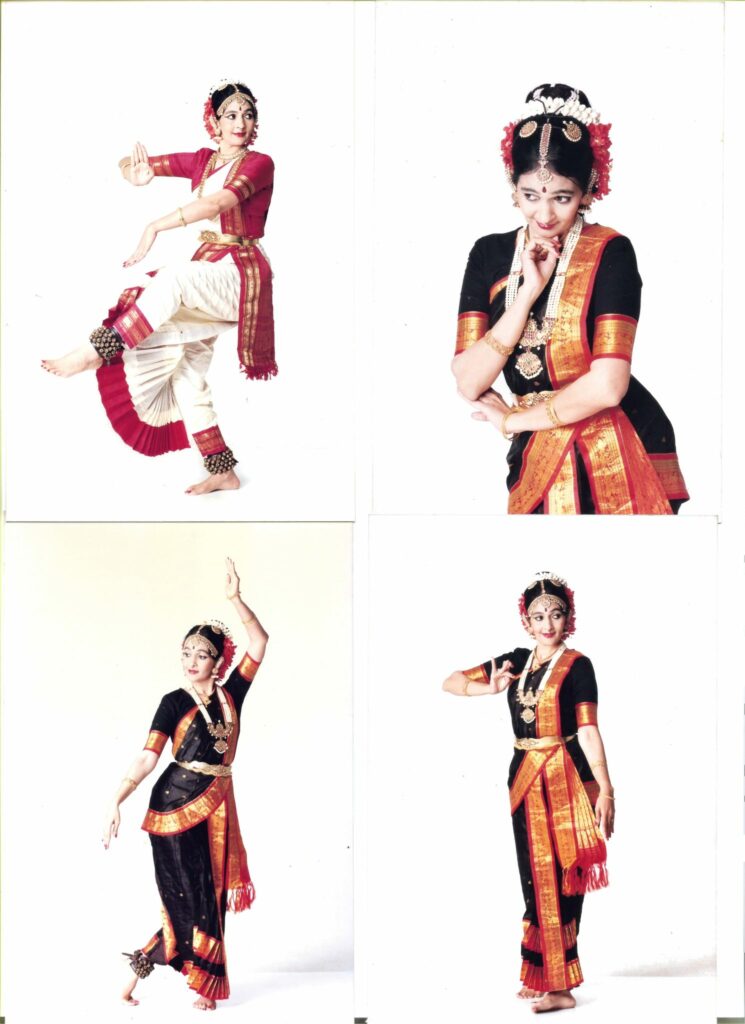
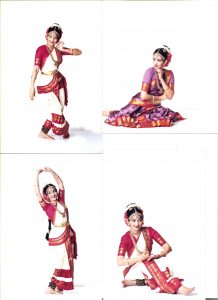
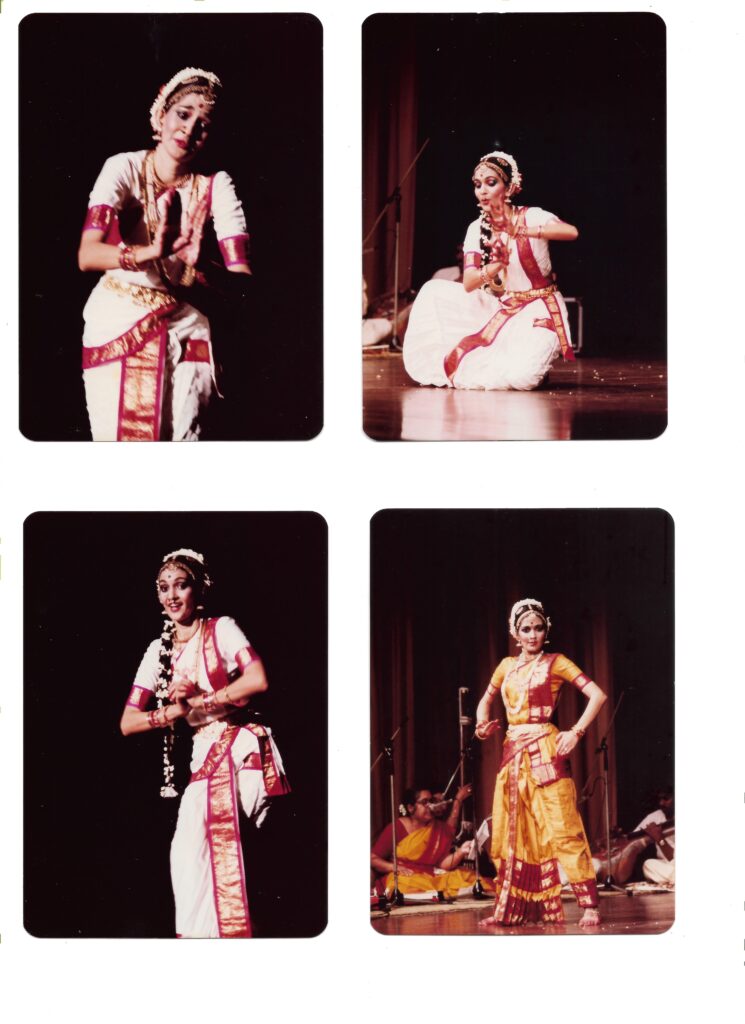
How special is Singapore to you and now that you live in Bangalore, what do you think constitutes the curiosity of the Indian diaspora?
Singapore was a place where I started a new phase of my life: being a wife, mother of two children, and a dance teacher. This was a nation that also introduced us to lifelong friends and mentors. At first, balancing and juggling all these roles was challenging, but they were equally rewarding. I also got to teach at my children’s schools as part of their extracurricular activities and prepare them for their performances for the annual Singapore Youth Festivals. In addition, I published several articles on Indian dance and culture in Singapore Hindu, a quarterly magazine published in Singapore.
Singapore has and will always be a home away from home, and a place that I will continually remain connected with, especially through dance.
Indian classical dance has grown across the world with the migration of the Indian communities to various countries. A desire to hold on to a part of our heritage and roots, along with a strong love for dance and performance, has surely built an interest in many to pursue these dance forms, which gradually gets carried on through generations and of course across various cultures as well.
What are some of the key productions you created, performed and taught?
Other than performing for my Master’s productions like Chandalika and Srinivasa Kalyanam, once I learned more about choreography and conducting dance classes with different age groups, I began to work towards creating my own productions. These include Siddhartha (based on the life of Gautama Buddha) whose music was composed by my late uncle, the veena maestro, Chitti Babu. Another one of my productions was Swarna Sundari, a story based on the Radin Mas area of Singapore. The music for this show was composed by Chitti Babu’s son, Sundar.
I am extremely grateful to Aravinth for fostering the choreography side in me to be able to develop my dance productions. He was and is a true friend, I can rely on and he along with Mrs and Mr Satyalingam have encouraged and supported me throughout all stages of these shows. I have no words to express my gratitude to all of them, for they too contributed largely to who I am, as an artist today.
After moving from the Bhaskar’s Academy, I started teaching at a community center, as Nupura Dance Academy, a name which Aravinth gave and helped it grow. My senior students Jayanthi, Hema, Sharmini, Premela, Shobha, Shirali, Shyla and Sunitha to name a few, fondly known as Akka’s girls, helped me with scriptwriting, shopping for costume accessories and of course backstage with the younger students.
All of us were learning at each and every step and having taken a stage management course earlier in Singapore, this helped me with overseeing the backstage aspects of large-scale productions. Additionally, choreography helped me visualize how the scenes should look like on stage with props and lighting and this in turn developed the choreography of the shows.
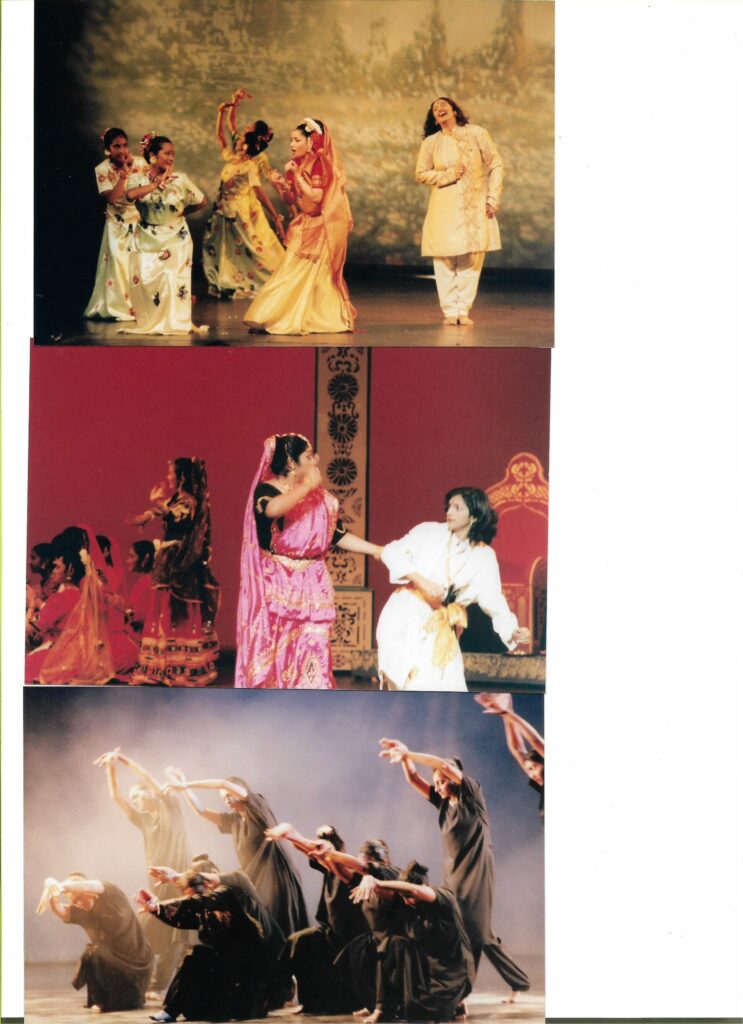
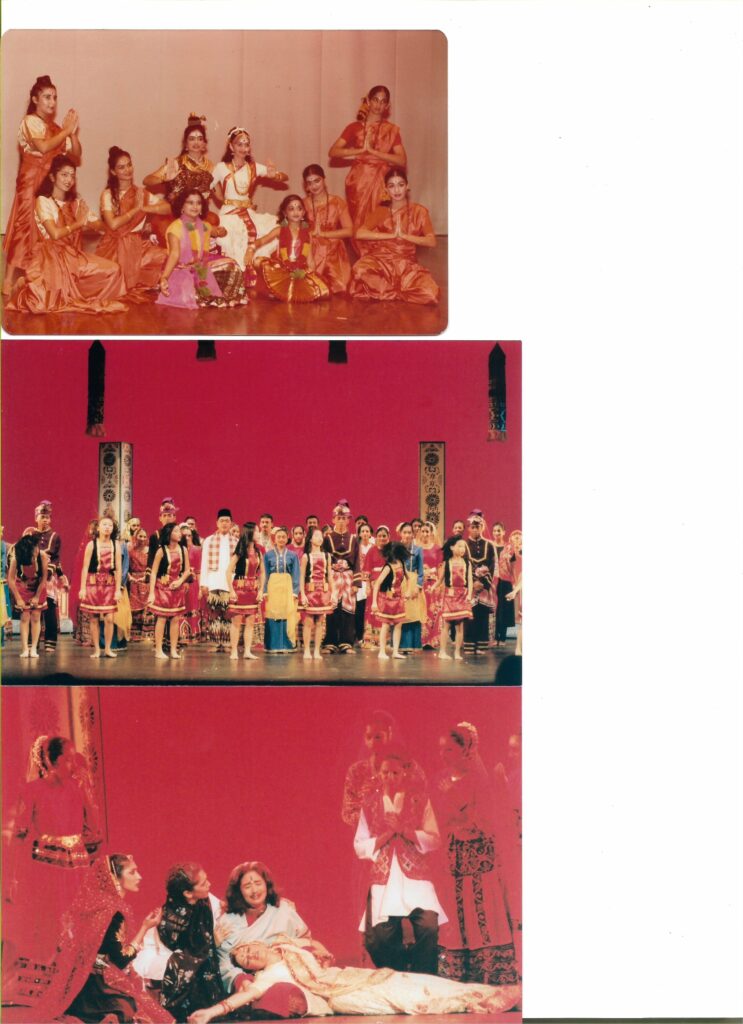
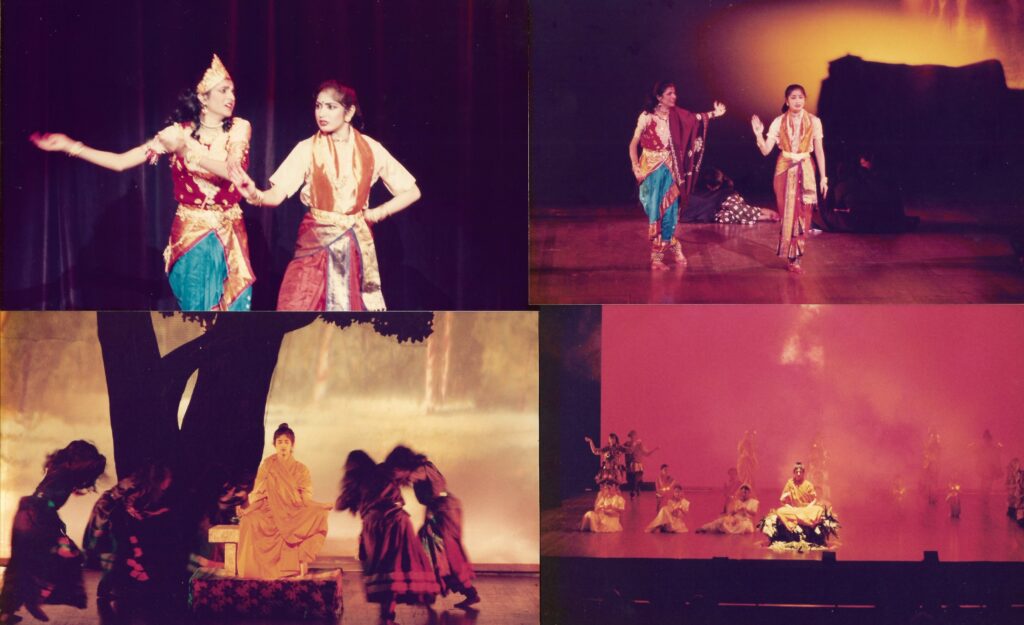
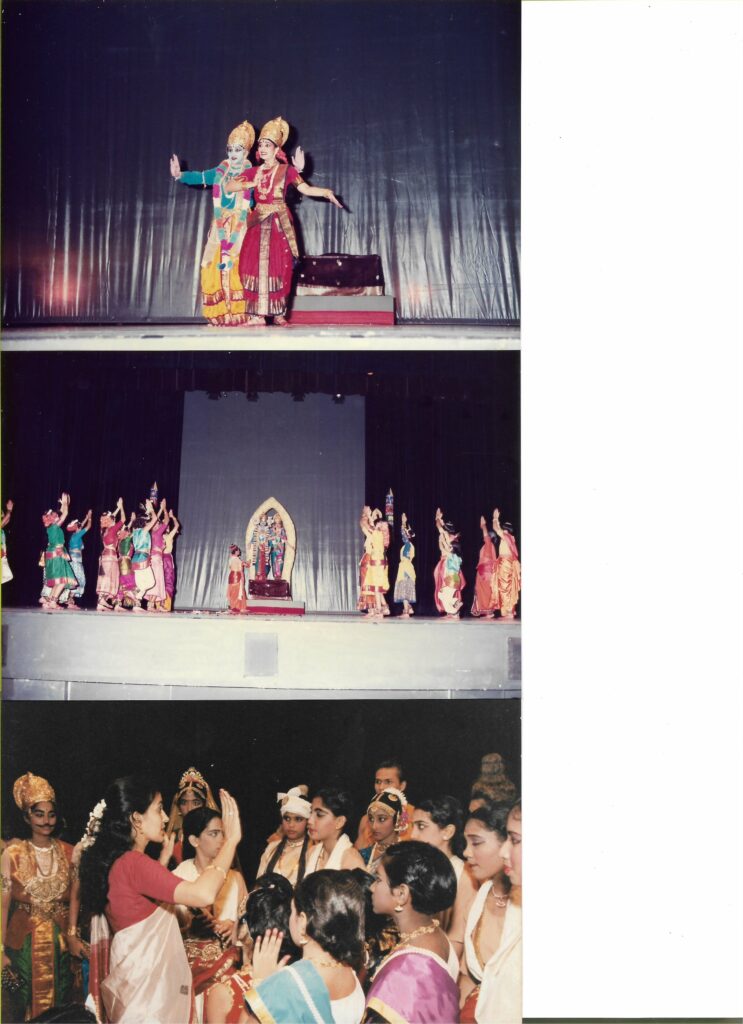
What does dance mean to you?
Dance was always a passion of mine since a very early age and thanks to my mother, who allowed me to pursue my love of dance and being able to take it to greater heights with my utmost gratitude towards my guru, my family, and my dear friends, colleagues and the dance community in Singapore, who not only supported me, but encouraged me every step of the way in all aspects of my dance experience.
However, a car accident brought this growing path to a grinding halt due to a spine and neck injury. To add to this, my husband’s company shifted us to India for a few years. Although it felt like we were returning to our homeland, it was difficult and a struggle leaving a home that gave my family and me so much and contributed largely to who we are as people today.
I left my classes to my senior girls, but eventually after their weddings and starting families, they became busy with their regular lives. Though I kept returning to Singapore as often as I could, it was not feasible to keep running the academy and hence I wrapped up my studio there. However, despite not teaching anymore, I knew that I wanted to continue being involved in the dance industry and so I began to organize huge performances for temple festivals, such as at Sripuram, the golden temple in Vellore.
What started off as introducing dance and music through showcasing reputed artists has today become a major annual event called Navarathiri Kala Utsav by Sri Narayani Kala Peedam. In fact, Apsaras Arts has performed here on several occasions. Over the years since leaving Singapore, Aravinth and Mrs Satyalingam would invite me to be their stage manager for their shows in Bangalore, Chennai and Singapore. Although a part of me misses doing choreography and teaching dance, I thoroughly enjoy my connection and involvements with the dance industry.
You wear many hats. Which do you enjoy the most?
I enjoy everything that I am and that I do. I may have my hands involved in many roles, but as I don’t believe I am a master of any of them, the learning challenges that they bring, keeps me wanting to learn and grow. Presently, organizing and stage management are the roles that I am passionate about and getting to see the developments of these shows and events is exciting.
EOM










